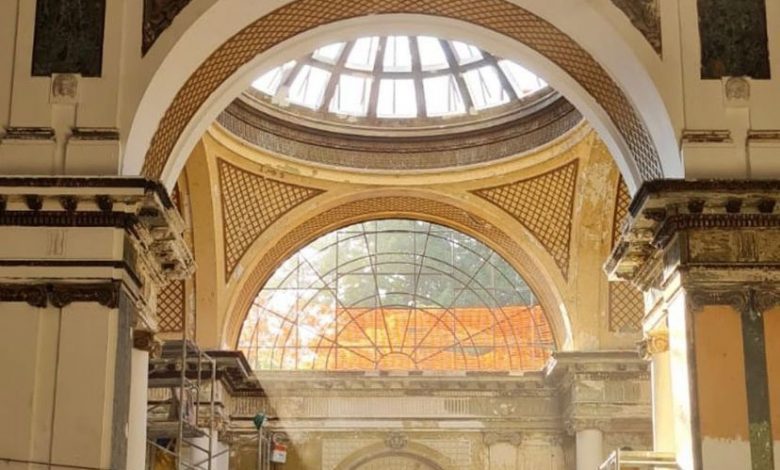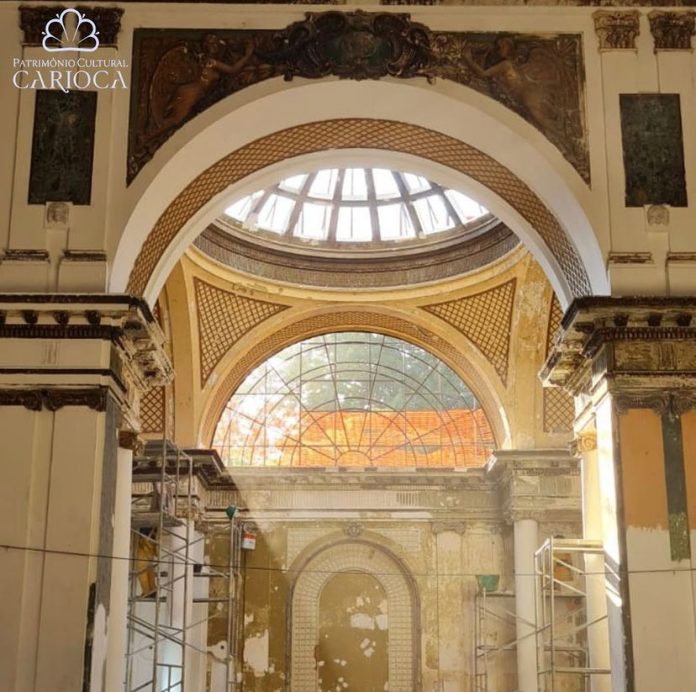Restauro do Antigo Automóvel Clube na Lapa: Prédio Histórico Recebe Nova Vida como Centro de Energia e Finanças


O prédio do antigo Automóvel Clube, localizado na Rua do Passeio, entre a Cinelândia e a Lapa, está passando por uma revitalização sob os cuidados do Instituto Rio Patrimônio da Humanidade (IRPH). Após anos de abandono, o edifício está recebendo uma atenção única, visando resgatar sua importância histórica e prepará-lo para um futuro renovado.
Nesta última semana, técnicos do Instituto realizaram uma vistoria às obras de restauração, que estão em pleno andamento desde o ano anterior. O prédio, que já foi palco de eventos automobilísticos e políticos importantes, está sendo transformado no que em breve se tornará o Centro de Energia e Finanças do Amanhã, um empreendimento ambicioso e inovador.
A visão por trás deste projeto é clara, conforme delineado pelo secretário de Desenvolvimento Econômico, Chicão Bulhões: “Ser um hub de economia verde e transição energética, reunindo no mesmo lugar empresas que atuam nesses segmentos, universidades e governo, com o tripé mercado, educação e pesquisa”. Uma iniciativa que não apenas preserva o patrimônio histórico, mas também o reanima com um propósito contemporâneo e progressista.
During the recent inspection, one of the aspects that caught the most attention was the opening of the main skylight of the building, which had been blocked with wood for decades. In addition, the first tests of gilding and the recovery of details and ornaments highlight the care and attention to detail being applied in this restoration.
The restoration works, a considerable investment of R$ 37 million, are rescuing not only the physical structure of the building, but also its rich history. At the site, there was a residence designed by Manuel de Araújo Porto Alegre, acquired by the Cassino Fluminense in the mid-19th century, when dance clubs were in vogue. It gained prominence for being frequented by high society and the Imperial Family. In 1854, it was renovated by the architect Luís Hoske, who transformed it into a two-story building with neoclassical lines and a luxurious interior, highlighting the ballroom. In 1900, the Clube dos Diários moved in. In 1910, it was renovated according to a project by Joseph Gire. In 1924, it became the headquarters of the Automóvel Club do Brasil. Its historical importance reached its peak on March 30, 1964, when then President João Goulart delivered his last speech before the military coup.
Over the years, the building witnessed different chapters of its history, from its use as the headquarters of the Automóvel Clube to its transformation into a Detran-RJ post. For financial reasons, the property was rented for the installation of the Bingo Imperial in 1996. After many protests from the population, the building was auctioned and acquired by the municipality, which took care of deactivating the establishment in 2003. During that same year, the property was once again occupied by the Automóvel Clube. In the following year, the building was emptied and has been closed since.
